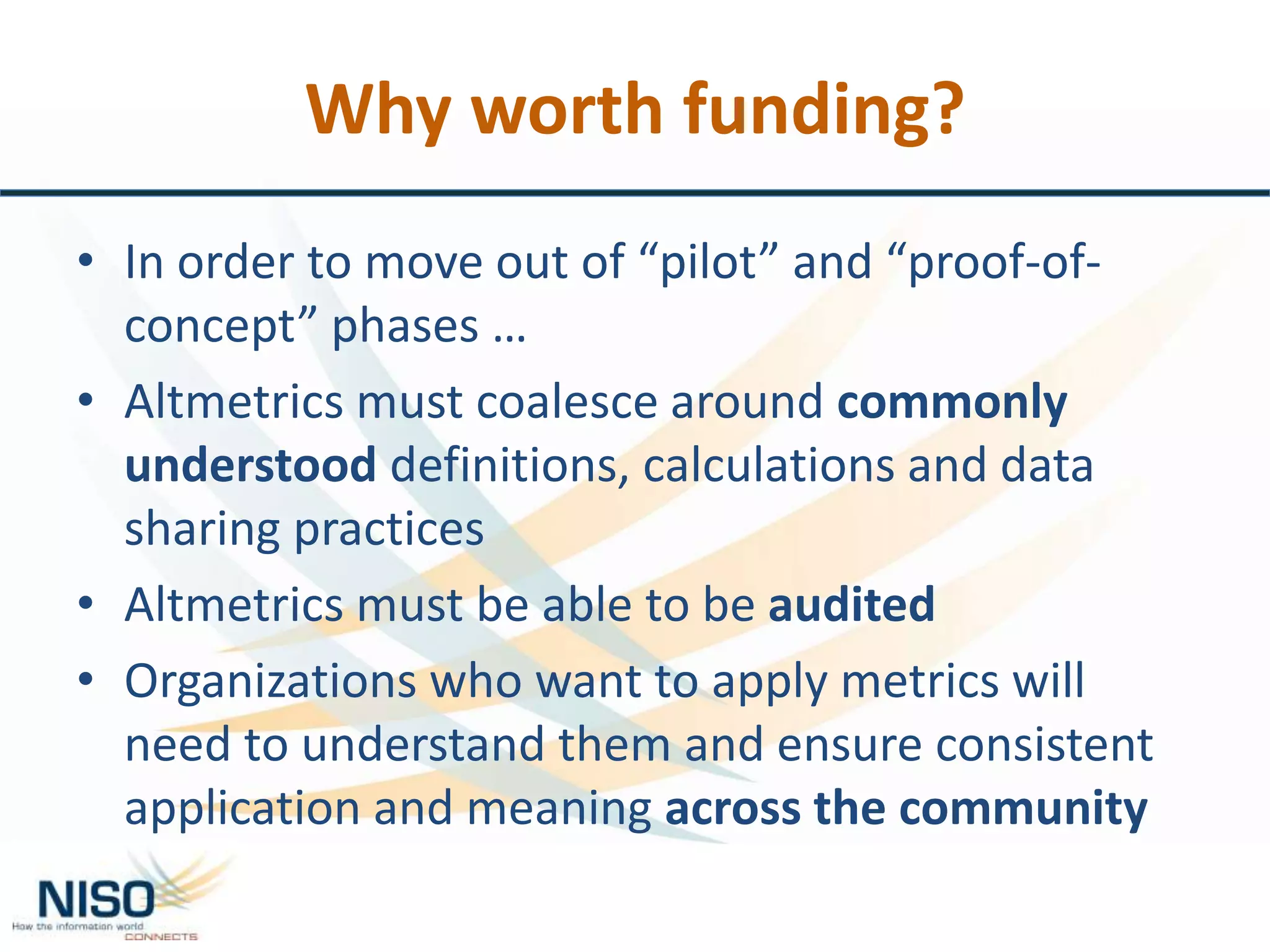The NISO Altmetrics Initiative aims to standardize commonly understood definitions, measurements, and data sharing practices for altmetrics to ensure consistent application across the community. Following a series of brainstorming sessions and community feedback phases, the initiative is moving towards the development of definitions and strategies to enhance data quality. Final recommendations for the initiative are expected to be published by August 2016 after a trial use period.










